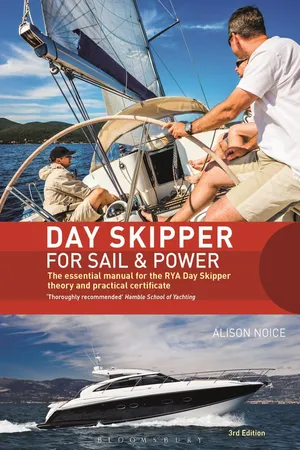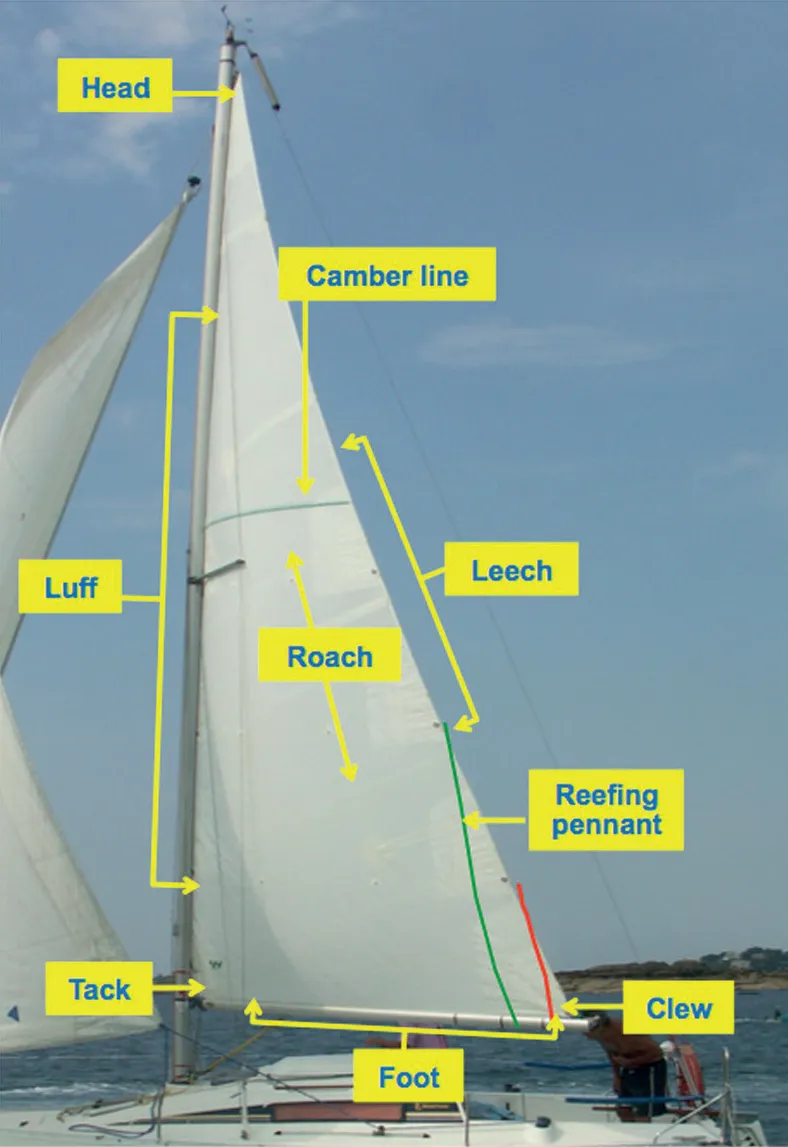
Day Skipper for Sail and Power
The Essential Manual for the RYA Day Skipper Theory and Practical Certificate 3rd edition
- 208 pages
- English
- ePUB (mobile friendly)
- Available on iOS & Android
Day Skipper for Sail and Power
The Essential Manual for the RYA Day Skipper Theory and Practical Certificate 3rd edition
About this book
Day Skipper for Sail and Power is a major reference book for anyone following the RYA Day Skipper course. Brought thoroughly up-to-date with new developments and covering all the theory and practical aspects of the RYA Day Skipper Certificate with full colour photography, helpful diagrams and worked examples, it is also a clear and comprehensive manual for anyone intending to make coastal passages in a small boat, covering: - seamanship
- safety equipment
- preventing collisions at sea
- navigation and chart work
- tides and tidal streams
- pilotage
- passage planning
- weather
- engine operation and maintenance
- the most up-to-date VHF radio procedures With its refreshingly practical approach and by the same author as the highly successful Yachtmaster for Sail and Power, no one intending to follow an RYA Day Skipper course whether for sail or power can afford to be without this lively, helpful guide to complement the course and assist with exam preparation.
Frequently asked questions
- Essential is ideal for learners and professionals who enjoy exploring a wide range of subjects. Access the Essential Library with 800,000+ trusted titles and best-sellers across business, personal growth, and the humanities. Includes unlimited reading time and Standard Read Aloud voice.
- Complete: Perfect for advanced learners and researchers needing full, unrestricted access. Unlock 1.4M+ books across hundreds of subjects, including academic and specialized titles. The Complete Plan also includes advanced features like Premium Read Aloud and Research Assistant.
Please note we cannot support devices running on iOS 13 and Android 7 or earlier. Learn more about using the app.
Information



Table of contents
- Cover
- Title Page
- Contents
- Introduction
- RYA National Cruising Scheme – sail training courses
- RYA National Cruising Scheme – motor training courses
- RYA Day Skipper Shorebased course syllabus
- Chapter 1 About Boats – Sail and Power
- Chapter 2 Knowing the Ropes
- Chapter 3 Anchors and Anchoring
- Chapter 4 Keeping Safe
- Chapter 5 Communications – Using the VHF Radio
- Chapter 6 Avoiding a Collision with Other Craft
- Chapter 7 The Engine
- Chapter 8 About Charts
- Chapter 9 Compasses
- Chapter 10 Chartwork – the First Steps
- Chapter 11 Tides and Tidal Streams
- Chapter 12 Finding Our Position
- Chapter 13 Course to Steer
- Chapter 14 Buoys, Beacons and Lights
- Chapter 15 Pilotage – Finding Your Way into Creeks and Harbours
- Chapter 16 Looking at the Weather
- Chapter 17 Fog
- Chapter 18 Passage Planning
- Appendix 1 Knowledge Check Answers
- Appendix 2 Glossary of Nautical Terms
- Appendix 3 Recommended Equipment for Inshore Cruising Boats
- Acknowledgements
- eCopyright